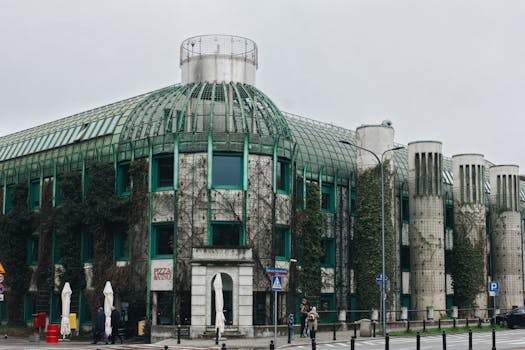
Sustainable Cities: How Europe is Shaping Eco-Friendly Lifestyles by 2025
Introduction to Sustainable Cities
Sustainable Cities, with a focus on Sustainable Cities, are becoming increasingly important as the world grapples with climate change and environmental degradation. Europe, in particular, has been at the forefront of this movement, with many of its cities implementing innovative and eco-friendly solutions to reduce their carbon footprint. In this article, we will explore the ways in which European cities are shaping eco-friendly lifestyles and transforming urban spaces into sustainable havens by 2025.
European Cities Leading the Way
Several European cities are leading the way in sustainable development, with Sustainable Cities being a key focus area. Cities like Copenhagen, Stockholm, and Barcelona have implemented a range of initiatives, including green roofs, bike-sharing schemes, and energy-efficient buildings. These cities are not only reducing their carbon footprint but also improving the quality of life for their citizens.
For example, Copenhagen’s carbon neutrality plan aims to reduce the city’s carbon emissions by 70% by 2025. The city has implemented a range of initiatives, including a bike-sharing scheme, electric buses, and a district heating system that uses waste heat from power plants. Similarly, Stockholm’s Royal Seaport district is being developed as a sustainable and fossil-fuel-free area, with a focus on green buildings, renewable energy, and sustainable transportation.
Key Initiatives and Strategies
So, what are the key initiatives and strategies that European cities are using to shape eco-friendly lifestyles? Some of the most effective initiatives include:
- Green Infrastructure: Many European cities are investing in green infrastructure, such as parks, green roofs, and green walls. These initiatives help to reduce air pollution, mitigate the urban heat island effect, and improve biodiversity.
- Sustainable Transportation: European cities are also investing in sustainable transportation options, such as bike-sharing schemes, electric buses, and trams. These initiatives help to reduce carbon emissions and improve air quality.
- Energy Efficiency: Many European cities are implementing energy-efficient solutions, such as LED lighting, smart grids, and district heating systems. These initiatives help to reduce energy consumption and lower carbon emissions.
- Waste Management: European cities are also implementing innovative waste management solutions, such as recycling programs, composting schemes, and waste-to-energy plants. These initiatives help to reduce waste and minimize the amount of waste sent to landfills.
Conclusion and Future Directions
In conclusion, European cities are leading the way in sustainable development, with a focus on Sustainable Cities and eco-friendly lifestyles. By implementing a range of initiatives and strategies, these cities are reducing their carbon footprint, improving the quality of life for their citizens, and creating a better future for generations to come. As we look to the future, it is clear that sustainable cities will play a critical role in shaping eco-friendly lifestyles and transforming urban spaces into sustainable havens by 2025.




1 thought on “Sustainable Cities: How Europe is Shaping Eco-Friendly Lifestyles by 2025”
Comments are closed.